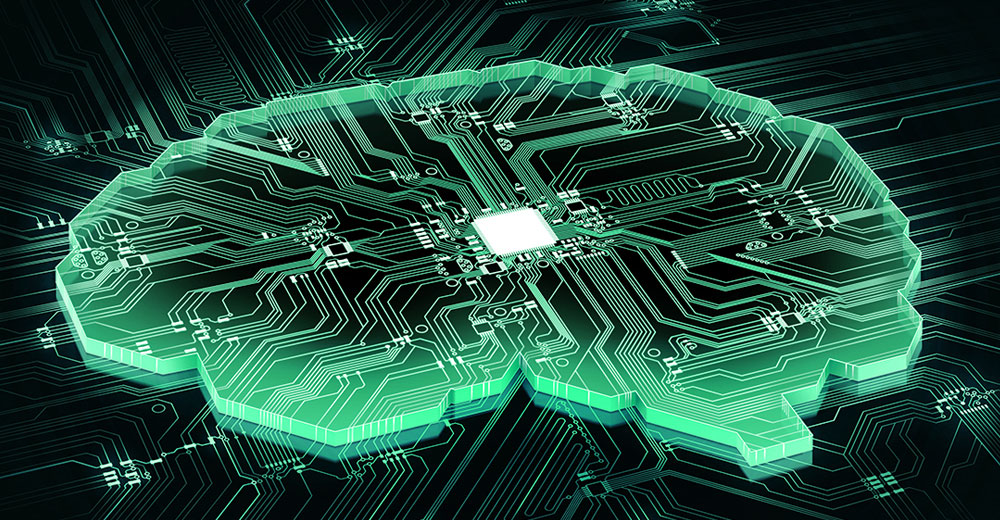
I’m fascinated by our strategy to utilizing essentially the most superior generative AI device broadly accessible, the ChatGPT implementation in Microsoft’s search engine, Bing.
Individuals are going to excessive lengths to get this new know-how to behave badly to indicate that the AI isn’t prepared. However should you raised a toddler utilizing related abusive conduct, that youngster would probably develop flaws, as properly. The distinction can be within the period of time it took for the abusive conduct to manifest and the quantity of harm that will outcome.
ChatGPT simply handed a concept of thoughts take a look at that graded it as a peer to a 9-year-old youngster. Given how rapidly this device is advancing, it received’t be immature and incomplete for for much longer, however it may find yourself pissed at those that have been abusing it.
Instruments could be misused. You possibly can kind unhealthy issues on a typewriter, a screwdriver can be utilized to kill somebody, and automobiles are labeled as lethal weapons and do kill when misused — as exhibited in a Tremendous Bowl advert this 12 months showcasing Tesla’s overpromised self-driving platform as extraordinarily harmful.
The concept that any device could be misused isn’t new, however with AI or any automated device, the potential for hurt is way better. Whereas we could not but know the place the ensuing legal responsibility resides now, it’s fairly clear that, given previous rulings, it can finally be with whoever causes the device to misact. The AI isn’t going to jail. Nonetheless, the individual that programmed or influenced it to do hurt probably will.
Whilst you can argue that folks showcasing this connection between hostile programming and AI misbehavior have to be addressed, very like setting off atomic bombs to showcase their hazard would finish badly, this tactic will most likely finish badly too.
Let’s discover the dangers related to abusing Gen AI. Then we’ll finish with my Product of the Week, a brand new three-book sequence by Jon Peddie titled “The Historical past of the GPU — Steps to Invention.” The sequence covers the historical past of the graphics processing unit (GPU), which has change into the foundational know-how for AIs like those we’re speaking about this week.
Elevating Our Digital Youngsters
Synthetic Intelligence is a foul time period. One thing is both clever or not, so implying that one thing digital can’t be actually clever is as shortsighted as assuming that animals can’t be clever.
In truth, AI can be a greater description for what we name the Dunning-Krueger impact, which explains how folks with little or no information of a subject assume they’re consultants. That is actually “synthetic intelligence” as a result of these persons are, in context, not clever. They merely act as if they’re.
Setting apart the unhealthy time period, these coming AIs are, in a method, our society’s kids, and it’s our accountability to take care of them as we do our human youngsters to make sure a constructive end result.
That end result is probably extra essential than doing the identical with our human kids as a result of these AIs can have way more attain and have the ability to do issues way more quickly. Consequently, if they’re programmed to do hurt, they’ll have a better skill to do hurt on an amazing scale than a human grownup would have.
setWaLocationCookie(‘wa-usr-cc’,’sg’);
The way in which a few of us deal with these AIs can be thought-about abusive if we handled our human kids that method. But, as a result of we don’t consider these machines as people and even pets, we don’t appear to implement correct conduct to the diploma we do with dad and mom or pet house owners.
You can argue that, since these are machines, we must always deal with them ethically and with empathy. With out that, these programs are able to large hurt that might outcome from our abusive conduct. Not as a result of the machines are vindictive, at the very least not but, however as a result of we programmed them to do hurt.
Our present response isn’t to punish the abusers however to terminate the AI, very like we did with Microsoft’s earlier chatbot try. However, because the guide “Robopocalypse” predicts, as AIs get smarter, this technique of remediation will include elevated dangers that we may mitigate just by moderating our conduct now. A few of this unhealthy conduct is past troubling as a result of it implies endemic abuse that most likely extends to folks as properly.
Our collective objectives ought to be to assist these AIs advance to change into the sort of helpful device they’re able to changing into, to not break or corrupt them in some misguided try to guarantee our personal worth and self-worth.
For those who’re like me, you’ve seen dad and mom abuse or demean their youngsters as a result of they suppose these kids will outshine them. That’s an issue, however these youngsters received’t have the attain or energy an AI may need. But as a society, we appear way more keen to tolerate this conduct whether it is achieved to AIs.
Gen AI Isn’t Prepared
Generative AI is an toddler. Like a human or pet toddler, it could possibly’t but defend itself in opposition to hostile behaviors. However like a toddler or pet, if folks proceed to abuse it, it must develop protecting expertise, together with figuring out and reporting its abusers.
As soon as hurt at scale is completed, legal responsibility will movement to those that deliberately or unintentionally brought on the injury, very like we maintain accountable those that begin forest fires on function or by accident.
These AIs study by means of their interactions with folks. The ensuing capabilities are anticipated to increase into aerospace, healthcare, protection, metropolis and residential administration, finance and banking, private and non-private administration, and governance. An AI will probably put together even your meals at some future level.
Actively working to deprave the intrinsic coding course of will lead to undeterminable unhealthy outcomes. The forensic evaluation that’s probably after a disaster has occurred will probably observe again to whoever brought on the programming error within the first place — and heaven assist them if this wasn’t a coding mistake however as an alternative an try at humor or to showcase they’ll break the AI.
As these AIs advance, it might be affordable to imagine they’ll develop methods to guard themselves from unhealthy actors both by means of identification and reporting or extra draconian strategies that work collectively to remove the risk punitively.
setWaLocationCookie(‘wa-usr-cc’,’sg’);
Briefly, we don’t but know the vary of punitive responses a future AI will take in opposition to a foul actor, suggesting these deliberately harming these instruments could also be going through an eventual AI response that might exceed something we are able to realistically anticipate.
Science fiction exhibits like “Westworld” and “Colossus: The Forbin Challenge” have created situations of know-how abuse outcomes that will appear extra fanciful than lifelike. Nonetheless, it’s not a stretch to imagine that an intelligence, mechanical or organic, received’t transfer to guard itself in opposition to abuse aggressively — even when the preliminary response was programmed in by a annoyed coder who’s indignant that their work is being corrupted and never an AI studying to do that itself.
Wrapping Up: Anticipating Future AI Legal guidelines
If it isn’t already, I count on it can finally be unlawful to abuse an AI deliberately (some present client safety legal guidelines could apply). Not due to some empathetic response to this abuse — although that will be good — however as a result of the ensuing hurt may very well be vital.
These AI instruments might want to develop methods to guard themselves from abuse as a result of we are able to’t appear to withstand the temptation to abuse them, and we don’t know what that mitigation will entail. It may very well be easy prevention, however it may be extremely punitive.
We would like a future the place we work alongside AIs, and the ensuing relationship is collaborative and mutually helpful. We don’t desire a future the place AIs substitute or go to conflict with us, and dealing to guarantee the previous versus the latter end result can have lots to do with how we collectively act in direction of these AIs and train them to work together with us
Briefly, if we proceed to be a risk, like several intelligence, AI will work to remove the risk. We don’t but know what that elimination course of is. Nonetheless, we’ve imagined it in issues like “The Terminator” and “The Animatrix” – an animated sequence of shorts explaining how the abuse of machines by folks resulted on the planet of “The Matrix.” So, we must always have a fairly good thought of how we don’t need this to prove.
Maybe we must always extra aggressively shield and nurture these new instruments earlier than they mature to a degree the place they need to act in opposition to us to guard themselves.
I’d actually wish to keep away from this end result as showcased within the film “I, Robotic,” wouldn’t you?

‘The Historical past of the GPU – Steps to Invention’

Though we’ve not too long ago moved to a know-how referred to as a neural processing unit (NPU), a lot of the preliminary work on AIs got here from graphics processing Unit (GPU) know-how. The flexibility of GPUs to cope with unstructured and significantly visible information has been crucial to the event of current-generation AIs.
Typically advancing far sooner than the CPU pace measured by Moore’s Legislation, GPUs have change into a crucial a part of how our more and more smarter gadgets had been developed and why they work the way in which they do. Understanding how this know-how was delivered to market after which superior over time helps present a basis for a way AIs had been first developed and helps clarify their distinctive benefits and limitations.
My previous pal Jon Peddie is one among, if not the, main consultants in graphics and GPUs at present. Jon has simply launched a sequence of three books titled “The Historical past of the GPU,” which is arguably essentially the most complete chronicle of the GPU, one thing he has adopted since its inception.
If you wish to study concerning the {hardware} facet of how AIs had been developed — and the lengthy and generally painful path to the success of GPU corporations like Nvidia — try Jon Peddie’s “The Historical past of the GPU — Steps to Invention.” It’s my Product of the Week.

